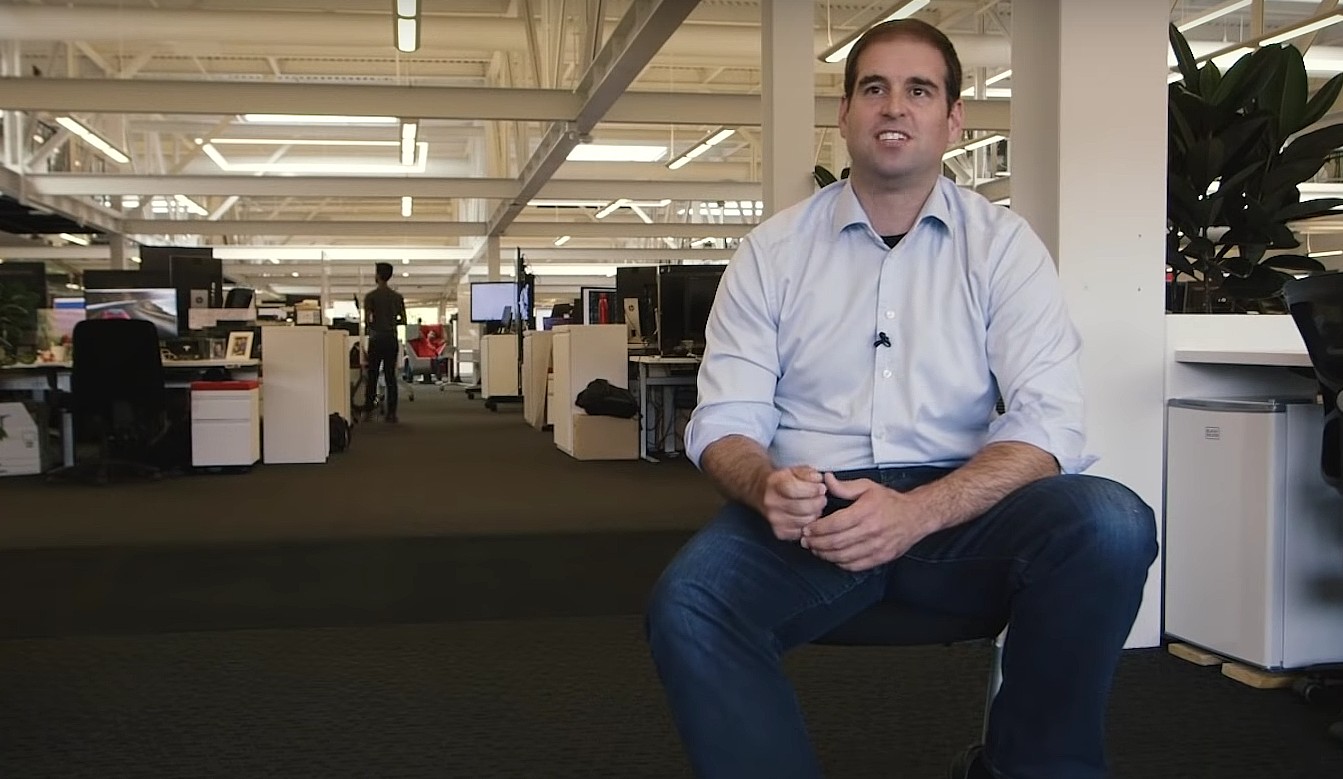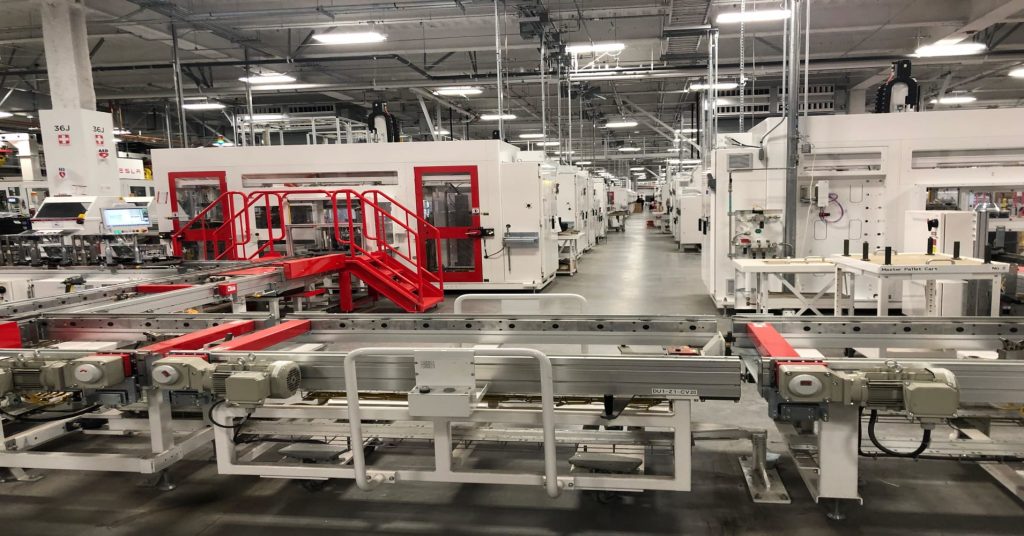

News
Tesla’s former CTO JB Straubel is ramping up his stealthy recycling business
When former CTO JB Straubel announced that he would be taking more of an advisory role in Tesla and that he would be stepping down from his day-to-day responsibilities as the electric car maker’s Chief Technology Officer, he provided a firm assurance that he was not “disappearing” from the company. The ongoing growth of a stealthy recycling startup registered under Straubel’s name suggests that his words back in the Q2 2019 earnings call were no fluke.
JB Straubel is known for being the backbone of Tesla’s battery tech. One of the most notable photos in Tesla history quite literally depicts Straubel assembling a battery module by hand. It would not be a stretch to state that innovations in Tesla Energy and at Gigafactory 1 in Nevada have been possible primarily due to Straubel’s work and genius. Yet, despite Tesla’s batteries being pretty much the best in the market, Straubel has noted that there is something still missing from the puzzle: closed loop battery recycling.
During the 2018 Annual Shareholders Meeting, Straubel addressed an inquiry from an investor about Tesla’s approach to battery waste. The former CTO’s response was brief, stating that Tesla’s priorities lie in recycling its batteries, thereby preventing the company’s old cells from ending up in landfills. Eventually, Straubel stated, Tesla wants to develop a closed loop, using the same materials from batteries that it recycles to create new packs.

“Tesla will absolutely recycle, and we do recycle, all of our spent cells, modules and battery packs. So the discussion about is this waste ending up in landfills is not correct. We would not do that, these are valuable materials. In addition, it’s just the right thing to do. We have current partner companies– on every major continent where we have cars operating– that we work with to do this today. And in addition, we’re developing internally more processes, and we’re doing R&D on how we can improve this recycling process to get more of the active materials back. Ultimately what we want is a closed loop, right, at the Gigafactories that reuses the same, recycled materials,” he said.
As noted by Tesla investor-enthusiast Galileo Russell of YouTube’s HyperChange channel, JB Straubel just so happens to have a startup that appears to address the very same point that he emphasized during the 2018 Shareholder Meeting. Registered to do business in Nevada, Straubel’s startup, called Redwood Materials, is focused on next-generation recycling technologies. A look at Redwood’s bare-bones official website shows a statement that goes very well with Tesla’s mission.
“Advancing sustainability through research and development, engineering, and operational excellence for next generation recycling processes and programs.”
Redwood Materials lists Straubel and fellow Tesla alumni Andrew Stevenson, who served under the former CTO as Head of Special Projects, as executive officers of the stealthy recycling startup. Filings for the recycling company have also shown that Redwood received $2 million worth of investments. Quite interestingly, Straubel provided a response to CNBC last year when the news outlet published a report on the startup, stating that Redwood, at least at that point, was not doing any direct business with Tesla.

“Redwood is not currently doing any business with Tesla and our expansion to Nevada is unrelated to Tesla or to the Gigafactory directly. Northern Nevada has a welcoming business environment, a growing technology presence and gives us a strong foundation for aggressive future growth,” he said.
It’s been over a year since Straubel gave his response to CNBC, and a lot has happened since then. Tesla’s batteries have improved, and if the Cybertruck’s starting price is any indication, the electric car maker appears to have lowered its battery production costs even further. Straubel has also transitioned to an advisory role in Tesla, presumably to focus on other projects. One of these projects could very well be the work being done by Redwood, which just happens to be completely compatible with Tesla’s electric cars and energy storage systems.
The signs definitely are there, and if the HyperChange host’s speculations prove right, it would mean that Tesla could be the auto industry’s first company that can achieve true closed loop battery recycling, a thing that was once considered as the holy grail for electric car production.
Watch HyperChange‘s video about JB Straubel’s stealthy startup in the video below.

Elon Musk
Elon Musk and Tesla AI Director share insights after empty driver seat Robotaxi rides
The executives’ unoccupied tests hint at the rapid progress of Tesla’s unsupervised Robotaxi efforts.

Tesla CEO Elon Musk and AI Director Ashok Elluswamy celebrated Christmas Eve by sharing personal experiences with Robotaxi vehicles that had no safety monitor or occupant in the driver’s seat. Musk described the system’s “perfect driving” around Austin, while Elluswamy posted video from the back seat, calling it “an amazing experience.”
The executives’ unoccupied tests hint at the rapid progress of Tesla’s unsupervised Robotaxi efforts.
Elon and Ashok’s firsthand Robotaxi insights
Prior to Musk and the Tesla AI Director’s posts, sightings of unmanned Teslas navigating public roads were widely shared on social media. One such vehicle was spotted in Austin, Texas, which Elon Musk acknowleged by stating that “Testing is underway with no occupants in the car.”
Based on his Christmas Eve post, Musk seemed to have tested an unmanned Tesla himself. “A Tesla with no safety monitor in the car and me sitting in the passenger seat took me all around Austin on Sunday with perfect driving,” Musk wrote in his post.
Elluswamy responded with a 2-minute video showing himself in the rear of an unmanned Tesla. The video featured the vehicle’s empty front seats, as well as its smooth handling through real-world traffic. He captioned his video with the words, “It’s an amazing experience!”
Towards Unsupervised operations
During an xAI Hackathon earlier this month, Elon Musk mentioned that Tesla owed be removing Safety Monitors from its Robotaxis in Austin in just three weeks. “Unsupervised is pretty much solved at this point. So there will be Tesla Robotaxis operating in Austin with no one in them. Not even anyone in the passenger seat in about three weeks,” he said. Musk echoed similar estimates at the 2025 Annual Shareholder Meeting and the Q3 2025 earnings call.
Considering the insights that were posted Musk and Elluswamy, it does appear that Tesla is working hard towards operating its Robotaxis with no safety monitors. This is quite impressive considering that the service was launched just earlier this year.
Elon Musk
Starlink passes 9 million active customers just weeks after hitting 8 million
The milestone highlights the accelerating growth of Starlink, which has now been adding over 20,000 new users per day.

SpaceX’s Starlink satellite internet service has continued its rapid global expansion, surpassing 9 million active customers just weeks after crossing the 8 million mark.
The milestone highlights the accelerating growth of Starlink, which has now been adding over 20,000 new users per day.
9 million customers
In a post on X, SpaceX stated that Starlink now serves over 9 million active users across 155 countries, territories, and markets. The company reached 8 million customers in early November, meaning it added roughly 1 million subscribers in under seven weeks, or about 21,275 new users on average per day.
“Starlink is connecting more than 9M active customers with high-speed internet across 155 countries, territories, and many other markets,” Starlink wrote in a post on its official X account. SpaceX President Gwynne Shotwell also celebrated the milestone on X. “A huge thank you to all of our customers and congrats to the Starlink team for such an incredible product,” she wrote.
That growth rate reflects both rising demand for broadband in underserved regions and Starlink’s expanding satellite constellation, which now includes more than 9,000 low-Earth-orbit satellites designed to deliver high-speed, low-latency internet worldwide.
Starlink’s momentum
Starlink’s momentum has been building up. SpaceX reported 4.6 million Starlink customers in December 2024, followed by 7 million by August 2025, and 8 million customers in November. Independent data also suggests Starlink usage is rising sharply, with Cloudflare reporting that global web traffic from Starlink users more than doubled in 2025, as noted in an Insider report.
Starlink’s momentum is increasingly tied to SpaceX’s broader financial outlook. Elon Musk has said the satellite network is “by far” the company’s largest revenue driver, and reports suggest SpaceX may be positioning itself for an initial public offering as soon as next year, with valuations estimated as high as $1.5 trillion. Musk has also suggested in the past that Starlink could have its own IPO in the future.
News
NVIDIA Director of Robotics: Tesla FSD v14 is the first AI to pass the “Physical Turing Test”
After testing FSD v14, Fan stated that his experience with FSD felt magical at first, but it soon started to feel like a routine.

NVIDIA Director of Robotics Jim Fan has praised Tesla’s Full Self-Driving (Supervised) v14 as the first AI to pass what he described as a “Physical Turing Test.”
After testing FSD v14, Fan stated that his experience with FSD felt magical at first, but it soon started to feel like a routine. And just like smartphones today, removing it now would “actively hurt.”
Jim Fan’s hands-on FSD v14 impressions
Fan, a leading researcher in embodied AI who is currently solving Physical AI at NVIDIA and spearheading the company’s Project GR00T initiative, noted that he actually was late to the Tesla game. He was, however, one of the first to try out FSD v14.
“I was very late to own a Tesla but among the earliest to try out FSD v14. It’s perhaps the first time I experience an AI that passes the Physical Turing Test: after a long day at work, you press a button, lay back, and couldn’t tell if a neural net or a human drove you home,” Fan wrote in a post on X.
Fan added: “Despite knowing exactly how robot learning works, I still find it magical watching the steering wheel turn by itself. First it feels surreal, next it becomes routine. Then, like the smartphone, taking it away actively hurts. This is how humanity gets rewired and glued to god-like technologies.”
The Physical Turing Test
The original Turing Test was conceived by Alan Turing in 1950, and it was aimed at determining if a machine could exhibit behavior that is equivalent to or indistinguishable from a human. By focusing on text-based conversations, the original Turing Test set a high bar for natural language processing and machine learning.
This test has been passed by today’s large language models. However, the capability to converse in a humanlike manner is a completely different challenge from performing real-world problem-solving or physical interactions. Thus, Fan introduced the Physical Turing Test, which challenges AI systems to demonstrate intelligence through physical actions.
Based on Fan’s comments, Tesla has demonstrated these intelligent physical actions with FSD v14. Elon Musk agreed with the NVIDIA executive, stating in a post on X that with FSD v14, “you can sense the sentience maturing.” Musk also praised Tesla AI, calling it the best “real-world AI” today.








